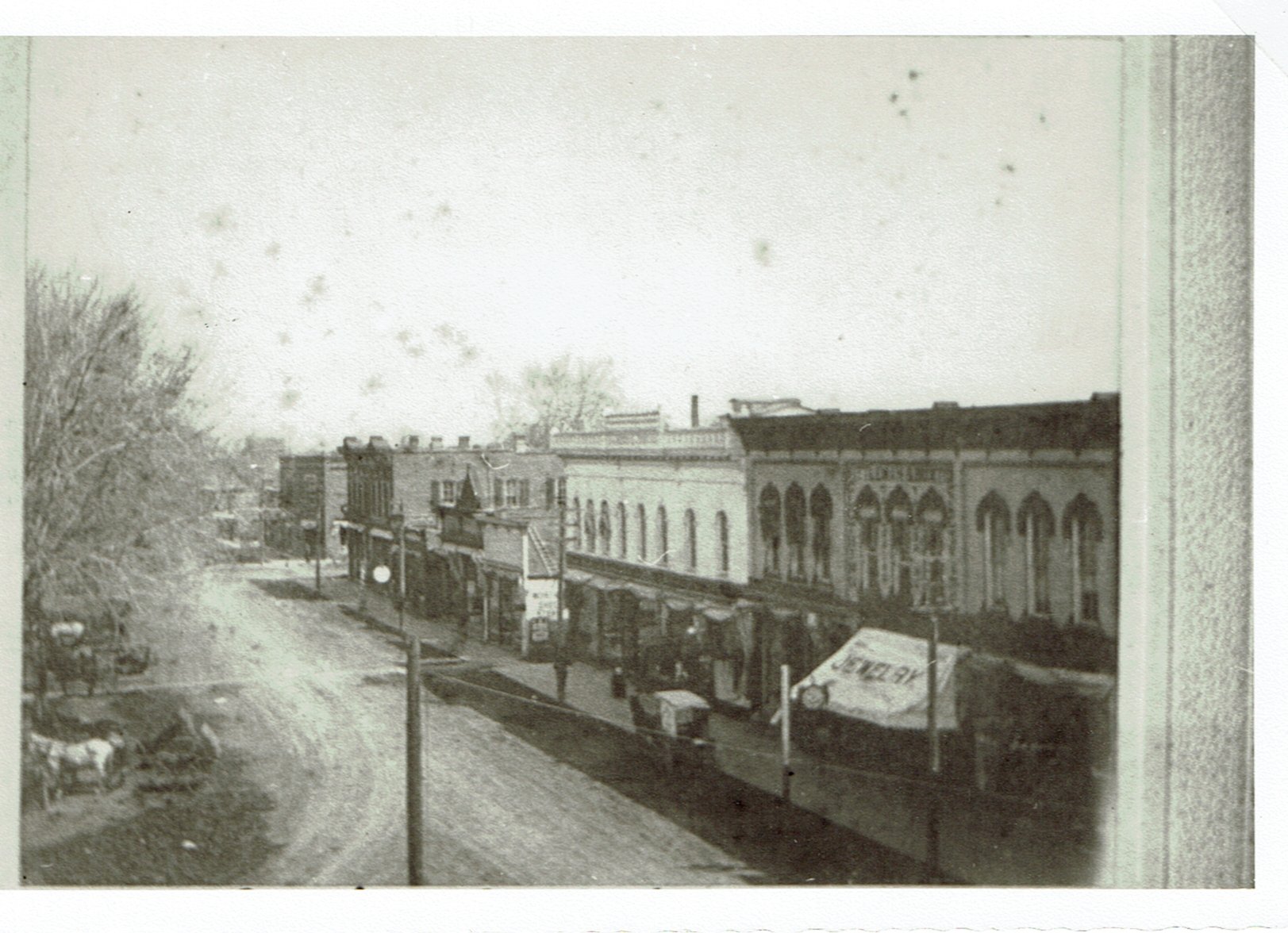-
- Back to:
- Home
- People
- Places
- Cemeteries
- Research
- Personal Memories
PAVING THE STREETS AND SIDEWALKS
Maintaining passable streets and sidewalks has
always been an on-going problem. On January 10, 1900, it was noted in
the Indianola Herald that the city is up-to-date in many ways but “Paved
streets would cause Indianola to take on metropolitan airs and would
stimulate business.”
Herald that the city is up-to-date in many ways but “Paved
streets would cause Indianola to take on metropolitan airs and would
stimulate business.”
Later that same year the editor of the Herald
complained that the streets around the square would soon become
impassable if the bad weather continued. He argued that smaller towns
had paved streets and the citizens of Indianola needed to show more
enterprise and get the project started. (December 6, 1900)
The winter of 1900 through spring of 1901 must have
been wetter and muddier than normal. Cole and Connoran claimed to be the
only place in town that had umbrella material. “The rainy season is at
hand, have your umbrellas put in shape to meet it. Don’t throw them away
when they can be repaired at small cost.” The newspapers kept pressing
the need for paved streets in Indianola. February 7, 1901, The Indianola
Herald reported, “Our streets do not correspond with our fine business
blocks and elegant homes and never will until they are paved.” March 7,
1901 in the Herald:
“Saturday was a good day to talk paving. Mud was shoe top deep… and
farmers were in half-way up to their boot tops getting to and from the
hitch rack… Let the people wake up and get down to business regarding
street paving.”
On April 4, 1901, in the Advocate Tribune: "The recent protracted
season of mud presses home to us that the paving question must soon be
met." On April 18, 1901 Mr. Houghtaling remarked that it was useless for
the farmers to wear good clothes during the muddy season when they come
to Indianola to trade. He added that the farmers deserve a dry spot to
step on since it is their trade that keeps the city alive. June 6, 1901, in the Herald:
“Indianola has the worst mud hole around her square of any town in Iowa.
As soon as the spring rains set in the water will stand deep enough to
float a boat half way around the square.”
The city council finally approved paving the
streets on April 6, 1903and in March of 1904 the Barber Asphalt Paving
Company began making arrangements begin the work. All that was needed
was to wait for the mud to dry up. If the weather cooperated, the plan
was to finish the paving in about 6 weeks.
Of course, when people get what they want it
doesn’t take long for complaints to begin. By July there were many who
thought the asphalt was too soft. The editor of the Herald tried to
assure citizens that the impressions left by wagons would be pressed out
with time and the entire street would become smooth, and if the pavement
was too hard now it would crumble in the winter.
So next time you complain about the road work on
Iowa Avenue or Clinton Avenue, think about those ancestors who had to
use board walkways to avoid the ankle deep mud. And when it wasn’t
muddy, imagine the clouds of dust that were stirred up. That wasn’t part
of the “good old days” that we want to remember.
Juanita Ott, Warren County Historical Society